
How to Use MQ-4 SENSOR METHANE: Examples, Pinouts, and Specs
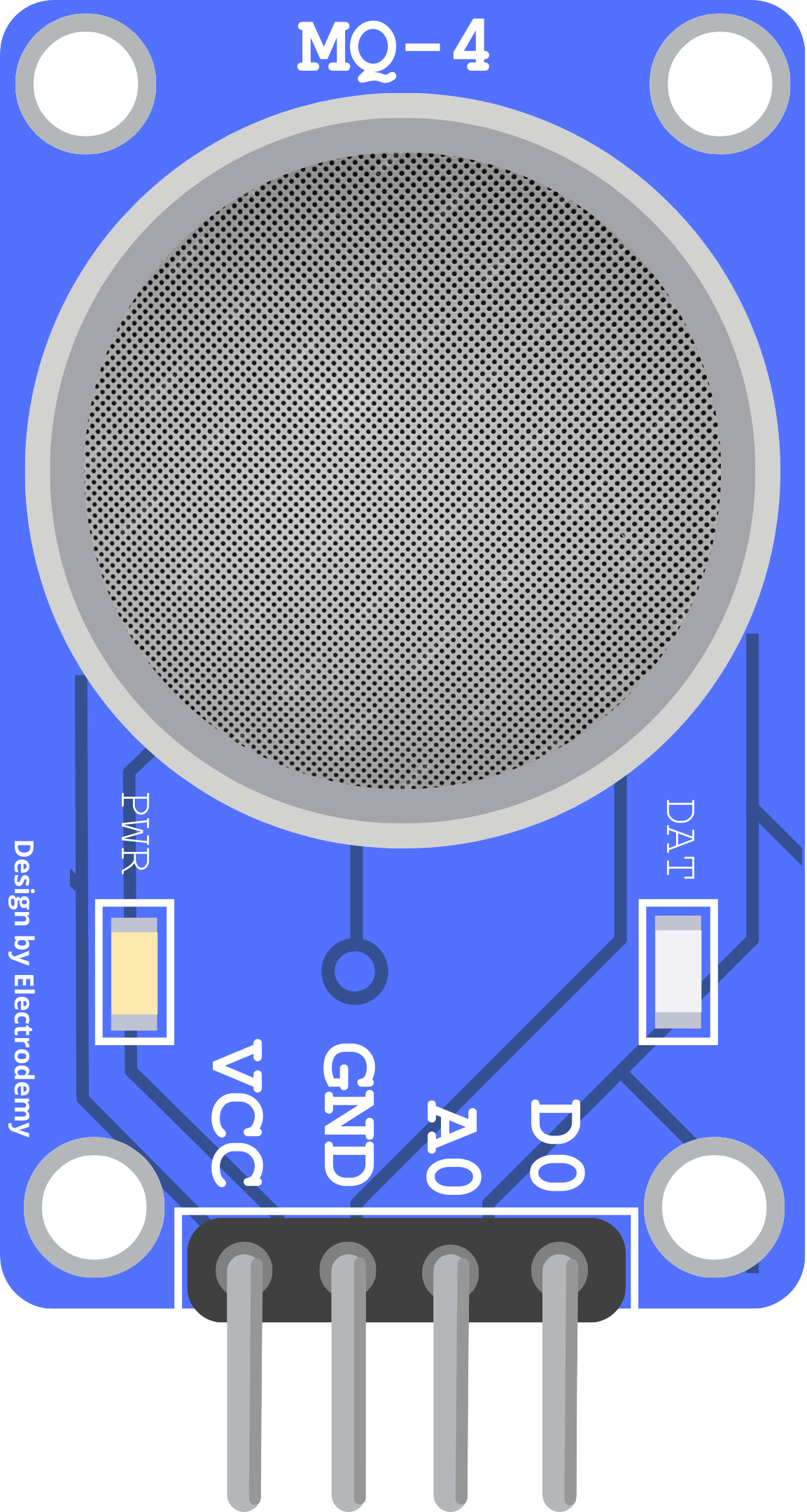
 Design with MQ-4 SENSOR METHANE in Cirkit Designer
Design with MQ-4 SENSOR METHANE in Cirkit DesignerIntroduction
The MQ-4 is a popular gas sensor module used for the detection of methane (CH4) in the air. Methane is a colorless, odorless gas, which makes it difficult to detect without specialized sensors. The MQ-4 sensor is widely used in industrial and home environments to monitor gas leaks and ensure safety. Common applications include gas leak alarms, methane detection systems in mines, and environmental monitoring.
Explore Projects Built with MQ-4 SENSOR METHANE
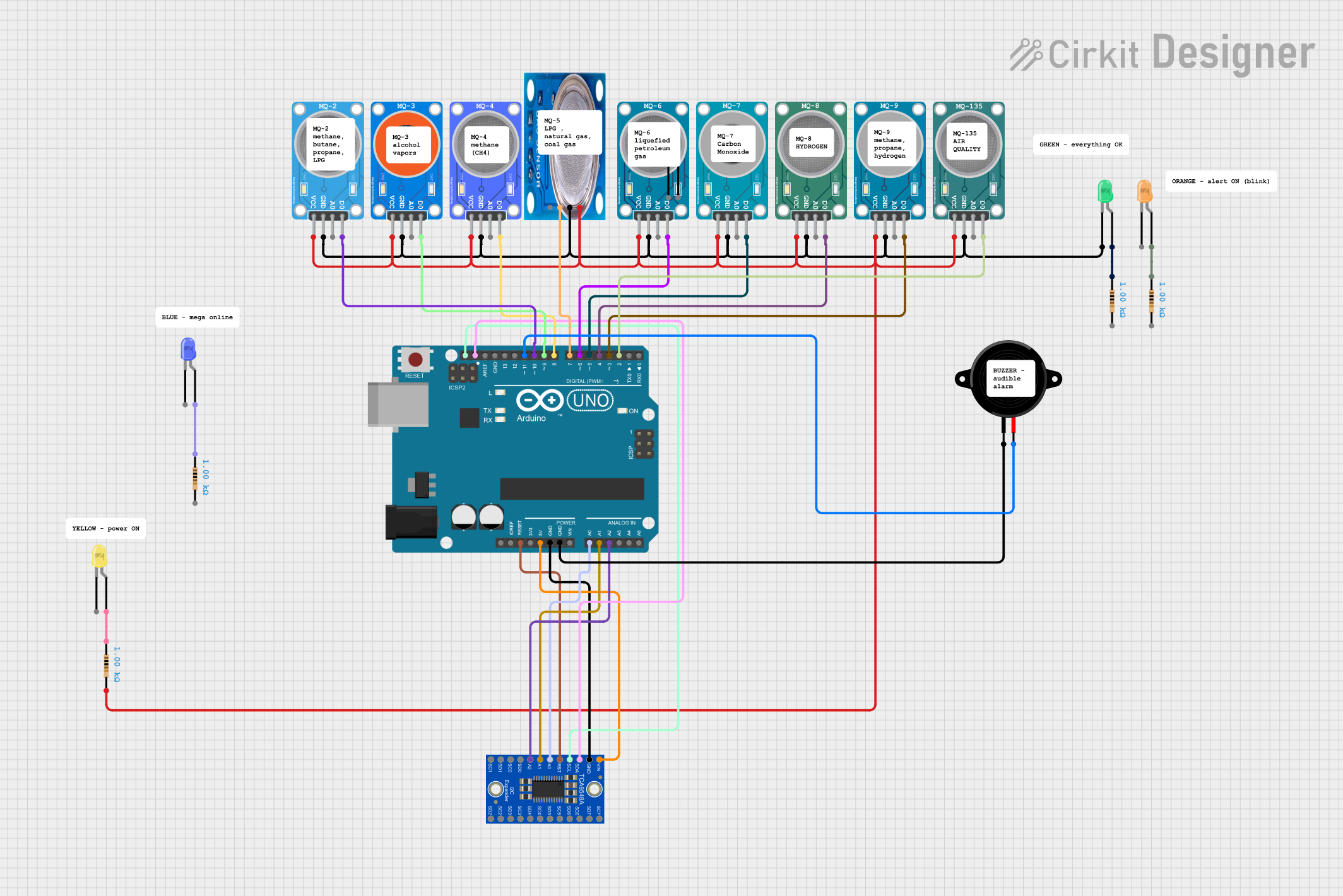
 Open Project in Cirkit Designer
Open Project in Cirkit Designer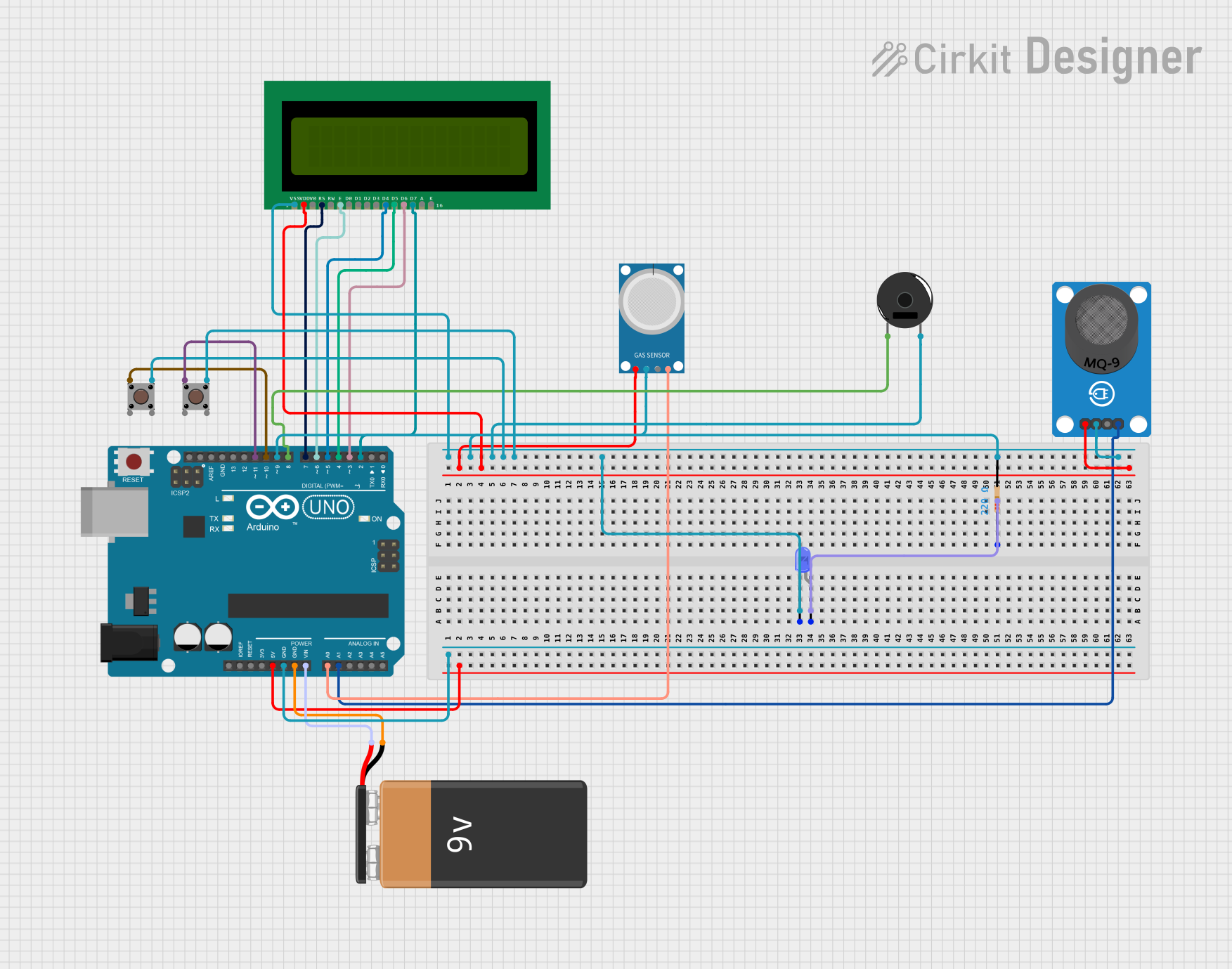
 Open Project in Cirkit Designer
Open Project in Cirkit Designer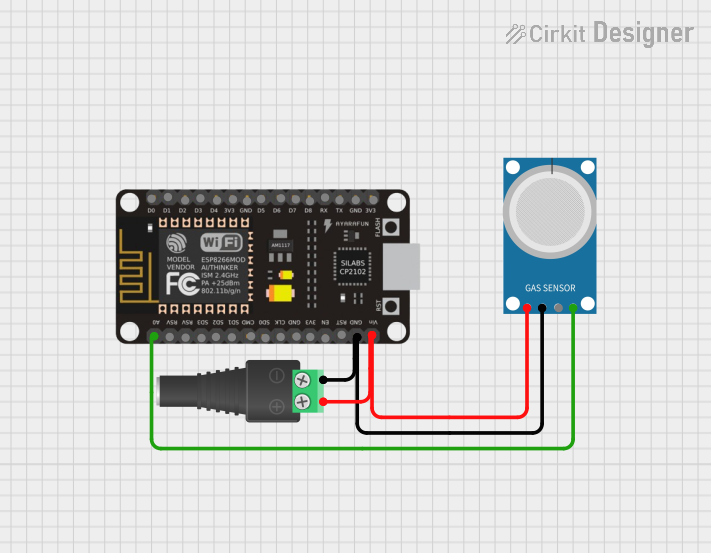
 Open Project in Cirkit Designer
Open Project in Cirkit Designer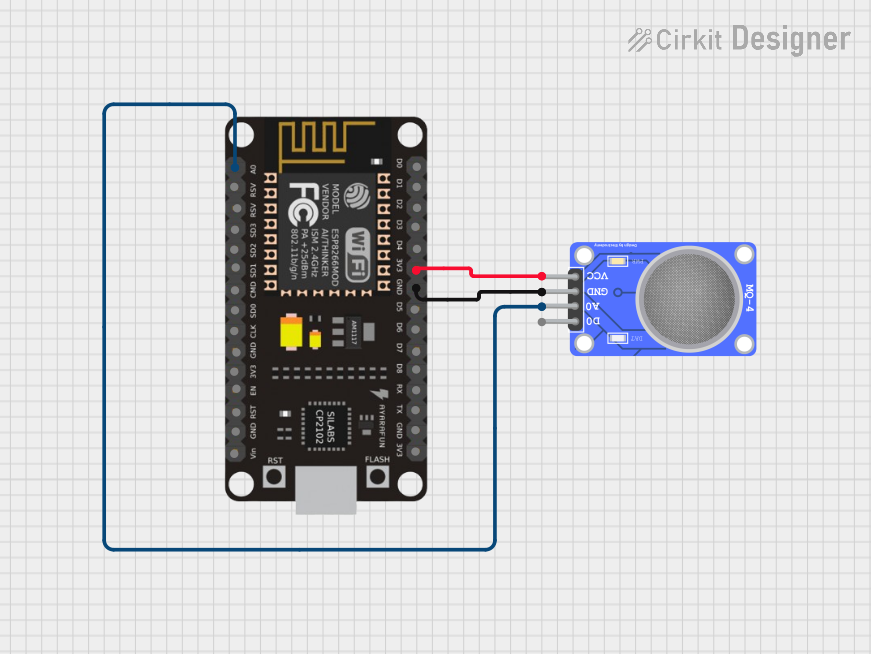
 Open Project in Cirkit Designer
Open Project in Cirkit DesignerExplore Projects Built with MQ-4 SENSOR METHANE

 Open Project in Cirkit Designer
Open Project in Cirkit Designer
 Open Project in Cirkit Designer
Open Project in Cirkit Designer
 Open Project in Cirkit Designer
Open Project in Cirkit Designer
 Open Project in Cirkit Designer
Open Project in Cirkit DesignerTechnical Specifications
Key Technical Details
- Detection Gas: Methane, CH4
- Concentration Range: 200 to 10,000 ppm (parts per million)
- Supply Voltage: 5V DC
- Preheat Duration: 20 seconds
- High Sensitivity and Selectivity to Methane
- Analog and Digital Output
- Operating Temperature: -10 to 50°C
Pin Configuration and Descriptions
| Pin Number | Pin Name | Description |
|---|---|---|
| 1 | VCC | Power supply (5V DC) |
| 2 | GND | Ground |
| 3 | DO | Digital output (0V or 5V) |
| 4 | AO | Analog output (0.1V to 0.3V normally) |
Usage Instructions
Integration with a Circuit
- Power Connection: Connect the VCC pin to a 5V supply and the GND pin to the ground.
- Output Reading: The analog output (AO) provides a voltage that is proportional to the methane concentration. Connect AO to an analog input on your microcontroller to read the methane levels.
- Digital Interface: The digital output (DO) can be set to a threshold with the onboard potentiometer. When the methane level exceeds this threshold, the DO pin will output a high signal (5V).
Best Practices
- Calibration: The sensor requires calibration to ensure accurate readings. Expose the sensor to a known methane concentration and adjust the onboard potentiometer until the desired output is achieved.
- Warm-Up Time: Allow the sensor to preheat for at least 20 seconds to stabilize the readings.
- Ventilation: Ensure proper ventilation around the sensor to allow gas diffusion.
- Avoid Extreme Conditions: Do not expose the sensor to extreme temperatures, humidity, or corrosive gases.
Example Code for Arduino UNO
// MQ-4 Methane Sensor with Arduino UNO
int analogPin = A0; // Analog input pin connected to AO
int digitalPin = 2; // Digital input pin connected to DO
int analogValue = 0; // Variable to store the analog value
int digitalValue = 0; // Variable to store the digital value
void setup() {
Serial.begin(9600); // Initialize serial communication
pinMode(digitalPin, INPUT); // Set the digital pin as input
}
void loop() {
analogValue = analogRead(analogPin); // Read the analog value
digitalValue = digitalRead(digitalPin); // Read the digital value
// Print the results to the Serial Monitor
Serial.print("Analog Value: ");
Serial.print(analogValue);
Serial.print(" | Digital Value: ");
Serial.println(digitalValue ? "HIGH" : "LOW");
delay(1000); // Wait for a second before the next read
}
Troubleshooting and FAQs
Common Issues
- Inaccurate Readings: If the sensor provides inconsistent or inaccurate readings, recalibrate the sensor and ensure it has been preheated properly.
- No Response: Check the power supply and wiring connections if the sensor shows no response.
FAQs
Q: How long does the MQ-4 sensor last? A: The lifespan of the MQ-4 sensor can vary based on usage, but it typically lasts for several years with proper calibration and maintenance.
Q: Can the MQ-4 sensor detect other gases? A: While the MQ-4 is designed for methane detection, it may show some sensitivity to other gases. However, it is not recommended to use it for detecting gases other than methane.
Q: Is the MQ-4 sensor suitable for outdoor use? A: The MQ-4 can be used outdoors but should be protected from water, dust, and extreme weather conditions to ensure accurate readings.
Q: How do I know if the sensor is working correctly? A: You can test the sensor by applying a known concentration of methane and checking if the readings are within the expected range. Regular calibration is also essential for maintaining accuracy.